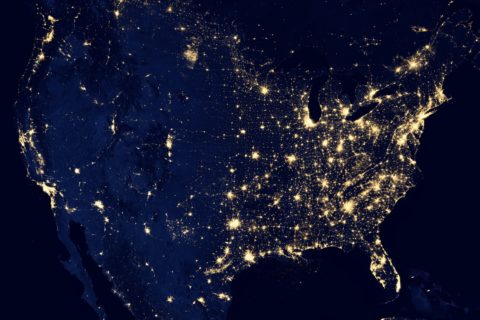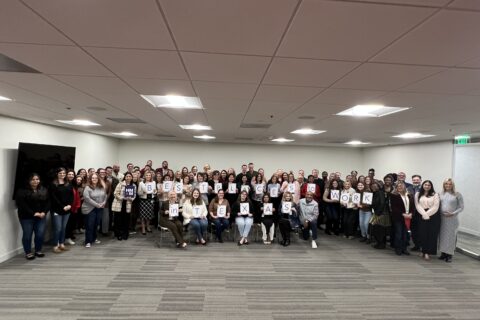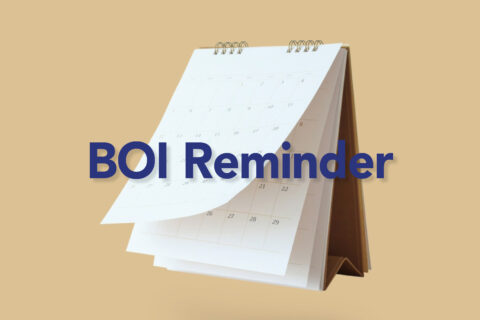Tax Day Arrives
Don’t forget that tomorrow, July 15, is the deferred filing date for most submissions to the IRS that would otherwise be due on or after April 1 and before July 15. Most significantly, for calendar year taxpayers, your Forms 1040 and 1120 are due or need to be extended. Importantly, 2019 tax payments due April 15, 2020, and 2020 first and second quarter estimated tax payments are due. Many, but not all, states adopted the substitute Federal filing and payment schedules. You’ll need to check on each state’s rules.
More Stimulus is on the Way
Policymakers and keen observers agree that there should be and that there will be more Federal stimulus efforts undertaken in short order and possibly as soon as the end of July. They just can’t agree on what those efforts will entail.
House Democrats passed in May the HEROES Act, a comprehensive list of demands costing $3.5 trillion. It was DOA in the Republican-controlled Senate. The Senate Republicans are currently discussing a package of as much as $1 trillion in total spending.
Here are some of the programs being considered and issues outstanding by various policymakers.
Targeted stimulus. There is general agreement that some form of stimulus should be targeted at communities of color and other disadvantaged communities.
Blanket PPP Loan forgiveness. About 80% of the PPP loans are under $100,000. Some commenters urge forgiveness of loans at this or some other relatively low amount without application for forgiveness or any further action by the borrower.
Additional aid for businesses. The PPP may or may not be the center of the next round of small business stimulus. The fact that the PPP is in place favors it being the vehicle for further small business stimulus. It is likely that a PPP extension or repurposing will be much more targeted at businesses that continue to struggle.
Additional aid for unemployed. Republicans want to be sure that this aid does not discourage people from returning to the workforce. There is some evidence that the up-to-$600 per week Federal unemployment supplement did discourage unemployed people from seeking employment, because they have been making more money when unemployed than when employed.
More direct payments to individuals. Although rife with examples of fraud, extension of this program is generally endorsed in principle by both parties.
State and local aid. Democrats say state and local governments need about $1 trillion in aid.
Healthcare and infrastructure. Neither party is opposed in principle. The amount of funding and details will have to be worked out.
Employer liability. Republicans are putting forth a proposal that allows employers to choose which government safety guidelines to follow in order to be shielded from lawsuits, if their customers or workers contract the virus. Mitch McConnell calls this employer liability shield his “red line” in stimulus negotiations. Democrats vocally and stoutly oppose this liability shield.
There’s more, of course. We’ll keep you posted.
EIDL Advances Gone, But Favorable EIDL Loans Are Still Available.
The CARES Act provided $20 billion of “free money” in the form of Economic Injury Disaster Loan (“EIDL”) advances (really grants) of up to $10,000 to small businesses, independent contractors, gig workers, nonprofits, and agricultural businesses. On July 11, SBA announced that the program is out of money.
While the grant program is gone, EIDL loans are still available to small businesses, independent contractors, gig workers, nonprofits, and agricultural businesses. After a hiatus, SBA resumed taking EIDL loan applications June 15.
Key terms of EIDL loans include:
- Probable current cap on a loan of $150,000 (possibly larger).
- Interest rate of 3.75% (2.75% for nonprofit organizations)
- Loan repayable monthly over 30 years
- First payment deferred for a year (with interest accruing)
- Loan pre-payable without penalty
- Loans over $25,000 may require collateral
- Loans over $200,000 may require a personal guarantee
There are other requirements and limitations regarding EIDL loans, but recipients of such loans tell me the application process and other requirements are not unduly burdensome.
SBA, Treasury Release Names of Some PPP Recipients
On July 6, for PPP loans of at least $150,000, SBA and Treasury released names of PPP loan borrowers and certain other details and amounts (within ranges). The national and local press has had a field day with identifying borrowers and their range of borrowings. You, too, can review PPP borrowers, if you wish. You can download the CSV file into Excel and sort until your heart’s content. The file is on Treasury’s website.
Main Street Lending Program Continues its Slow Launch
Main Street Lending Program is the Federal Reserve System’s initiative to expand credit to midsize-businesses. It is administered by the Boston Fed and is funded in the amount of about $600 billion. The program opened for lender registration in June and became fully operational July 6. Many larger banks (and many smaller banks) have not yet elected to participate in the program. The program is cumbersome for the lenders. Lender concerns have not been fully addressed. Borrowers are faced with various restrictions surrounding the loans. These loans are not forgivable. The minimum loan size is $250,000. The jury is still out on whether this program will be a meaningful stimulus measure.
Don’t Forget That Almost All RMDs in 2020 Can be Rolled Over by August 31, 2020
The CARES Act waived required minimum distribution (“RMDs”) due in 2020. However, many seniors had already taken out part or all of their 2020 RMDs before the waiver became law. While there is a limited rollover relief available one time per year, this limited relief did little to help many seniors who in 2020 had taken RMDs before the law passed or had taken multiple RMDs.
The IRS released Notice 2020-51 that provides unprecedented blanket relief for most unwanted RMDs. The ability to return unwanted 2020 RMDs is only available for rollovers or returns done by August 31, 2020.
New Bill Helping Nonprofits on the Way to the President for Signing (as of Monday)
With bipartisan and bicameral agreement, Congress sent last Thursday to President Trump for signature the Protecting Nonprofits from Catastrophic Cash Flow Strain Act (the “PNfCCFSA”?). This legislation addresses situations where nonprofits operate as “reimbursing employers” with respect to unemployment benefits collected by their former employees. Normally such nonprofits reimburse the state for 100% of unemployment benefits. Under this new act, Congress makes clear its intent in the CARES Act to pay 50 percent of such benefits to the states. The subject nonprofits reimburse only 50 percent of the benefits from March 13, 2020 through the end of 2020.
Contact your HM&M Advisor with any questions.
For more information check out HM&M’s COVID-19 Resources page.
HM&M COVID-19 ResourcesLatest Blog
DALLAS, TX – [February 21, 2025] –HM&M, a leading accounting and advisory firm, is proud to announce that ...
Updated February 14, 2025 A complex trust or estate may make an election under Internal Revenue Code Section ...
As this reminder was going to press, a Texas-based federal court issued a preliminary injunction prohibiting the federal ...
HM&M Updates
DALLAS, Dec. 11, 2024 – Springline Advisory, a trailblazing financial and business advisory firm, is proud to announce its partnership ...
Last month, Senior Manager, Pearl Balsara was invited to speak at the 2023 FPA DFW Annual Conference in ...
We are pleased to announce the winners of the 2022 HM&M Excellence Awards. Ronna Beemer, Keith Phillips, and ...









